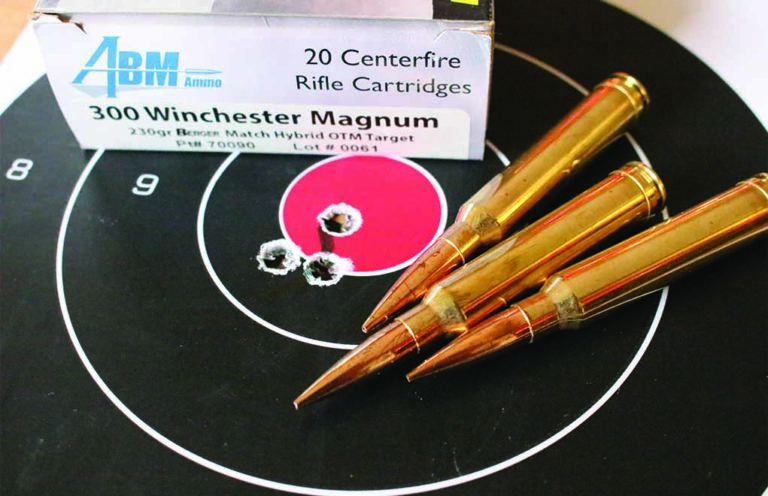
Why the choice of cartridge means so much in the long-range game.
I was lying prone in the Oregon desert, having just broken the trigger of the Ruger rifle and watching the vapor trail of the Hornady A-Tip bullet through the Leupold Mark 5 riflescope, when the air in front of the target started to distort, and I saw the impact on the left quarter of the steel plate 1,500 yards away. In spite of the three aforementioned pieces of excellent gear, my mind wandered to the cartridge—one of the first of the revisionist cartridges, the 6.5 Creedmoor.
Now, before you turn the page, this article is not focused on the Creedmoor; instead, it’s about the concept it embraces. We’ve discovered that the high-BC bullets, which retain their energy so well at longer ranges, are key to hitting a target at extremely long ranges and that the biggest, most voluminous cartridges might not play such an important role.
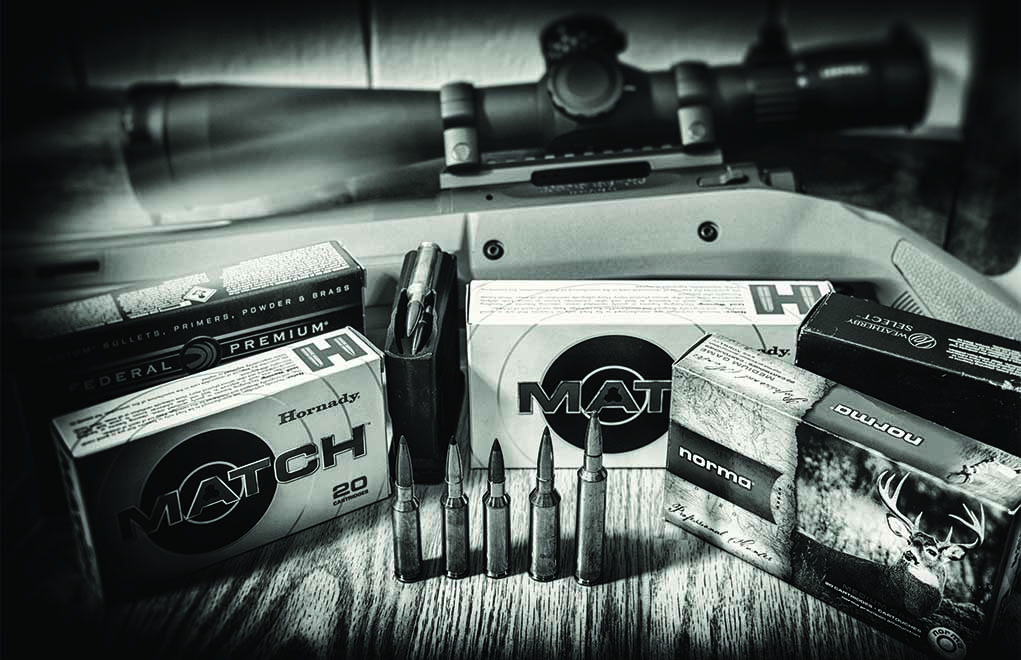
But, the cartridge must have the proper geometry to harbor those long bullets that do the job so well. I used the phrase, “revisionist cartridge,” earlier. By that, I mean those newer designs that have sacrificed case length and/or capacity to allow the room in the magazine to be occupied by bullet length.
From Cartridge to Cartridge
For years, the .308 Winchester was the darling of the target community. It’s a great cartridge, capable of fantastic accuracy, and makes a wonderful hunting cartridge. It’s mild in the recoil department and, with match-grade bullets in the 155- to 190-grain range, it still makes a good choice out to 1,000 yards or so. Now, to me (at the time a kid in the Northeast who considered a 200-yard shot a “country mile” because of a lack of opportunity to shoot that far), a 1,000-yard shot might as well have been trying to reach the moon. Therefore, a .308 Winchester did everything I needed it to.
But, that wasn’t to last for long.
I took an interest in 6.5mm cartridges when a friend asked for some help zeroing his 6.5×55 Swede. It turned out he had some loose bases. Even so, during the process, I found I really enjoyed the way it shot; and, delving into the paper ballistics, I saw some impressive numbers.
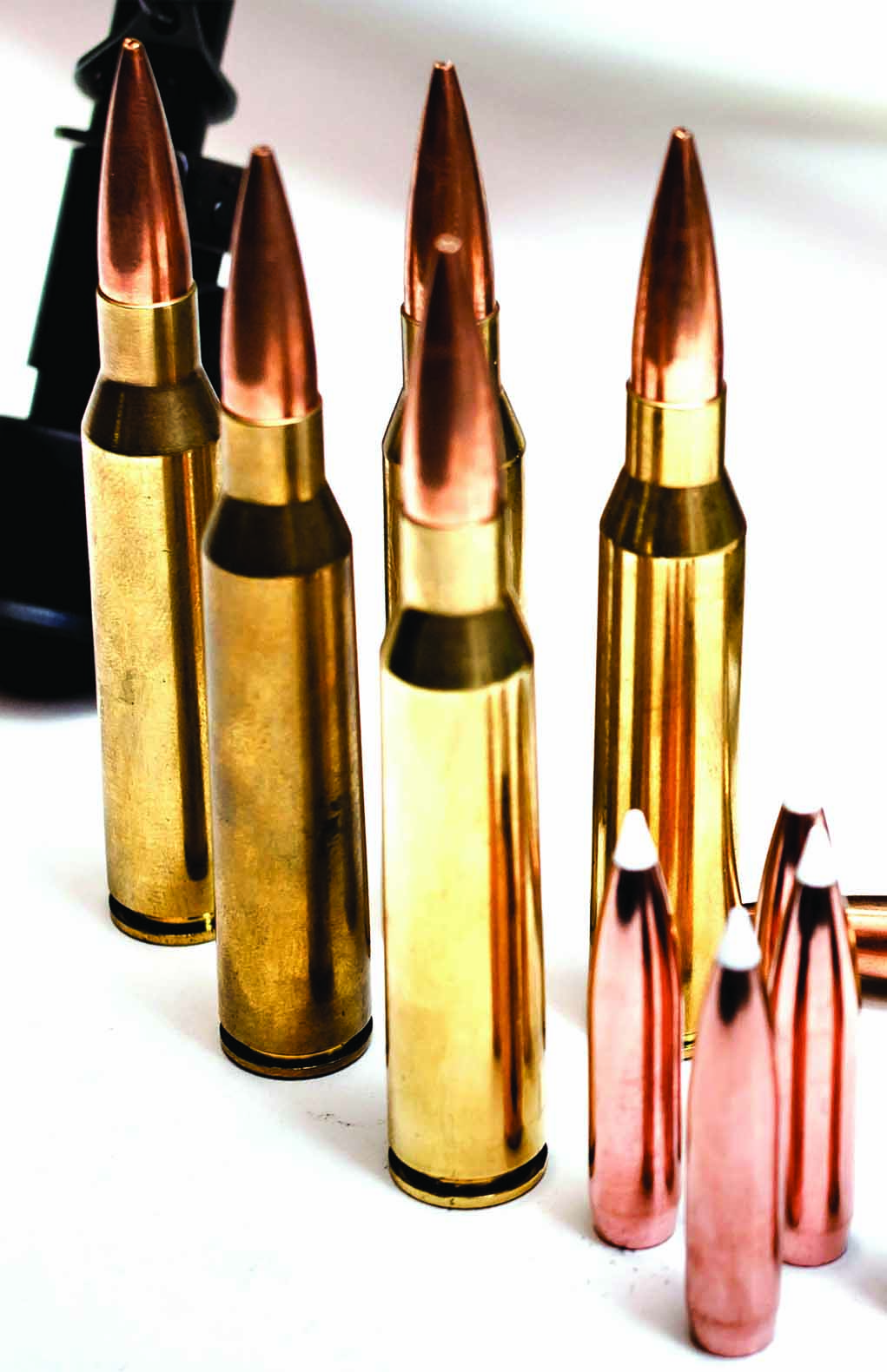
Going farther down the “rabbit hole,” I began spending time with, and loading for, the .260 Remington and .264 Winchester Magnum. I realized why the bore diameter was so popular globally and wondered why it had such a weak following in the States.
About a decade later, the Creedmoor began to take off—years after its 2007 release—and it took a bit to understand why the shooting community would opt for the shorter cartridge when the .260 Remington fit just fine in the short-action rifles. The great BC game was strongly underway, and it took off like wildfire. In the early 2000s, the .260 Remington had a strong following, giving a trajectory on par with the .300 Winchester Magnum.
However, the 6.5 Creedmoor’s capability of loading higher-BC bullets saw the “younger” cartridge begin to take off by the beginning of the next decade. And, make no mistake about it: There’s no more blend of accuracy, availability and affordability than the 6.5 Creedmoor. It no longer matters whether you love to hate it or hate to love it; the Creedmoor is the biggest bang for the buck in the long-range shooting market.
Long-Range Shooting For Everyone
Distances to the target increased, and a new market was born, because everyone was suddenly shooting long range.
The .338 Lapua was a popular choice, but with the big, Rigby-based case came a whole lot of recoil and cost. Nevertheless, it worked very well, with the long, 300-grain bullets giving solid performance at long ranges. Eventually, the .338-inch bullets grew in length—but not necessarily in weight—as the designs saw the ogive increase to the point at which that bullet couldn’t be seated in the Lapua case without grossly exceeding the magazine capacity.
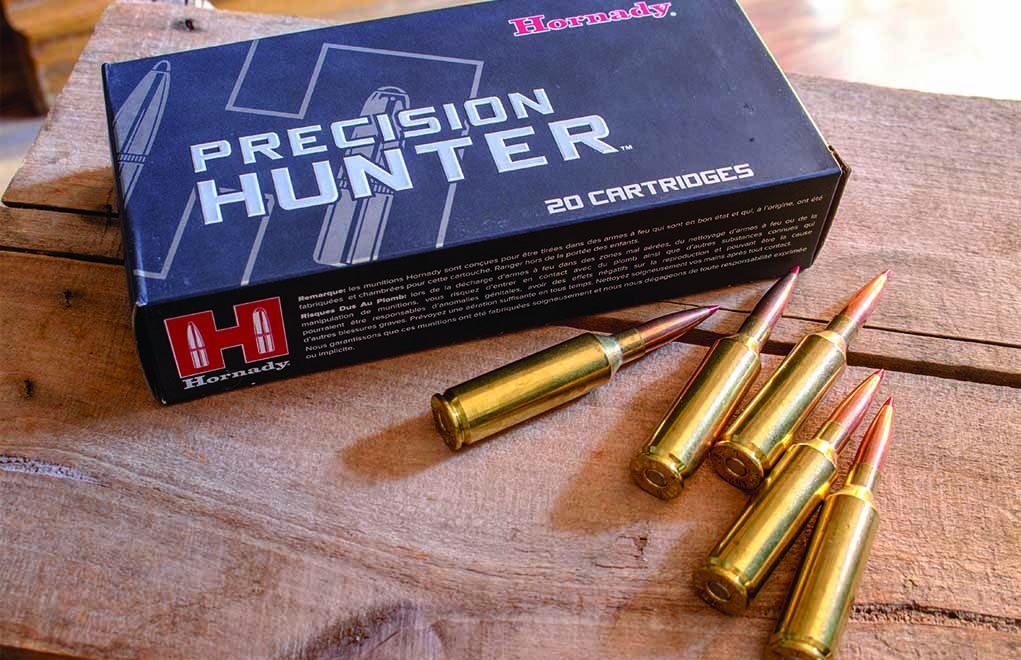
Enter the .338 Norma Magnum, which uses a shortened Lapua case to best utilize that magazine length and allowing the long Sierra 300-grain bullet to be properly seated on the shank and not on the ogive. It’s a wonderfully accurate cartridge (in fact, I came in second in a shooting competition in Germany with it, printing a four-shot group measuring 1¾ inches at 500 meters); and, if you’re a fan of the .338-inch bore diameter, the .338 Norma deserves an audience.
The .300 Winchester Magnum—long a popular choice among snipers and precision shooters—suffers from the “too-long-for-magazine” syndrome. Developed as a hunting cartridge in 1963, the .300 Winchester has a hard time properly seating those high-BC, 30-caliber bullets in a standard long-action magazine, especially the older ones. With a proper throat, you can single-feed the .300 Winchester.
Nevertheless, I think you see the issue I’m describing: Many of the cartridges we know and love just can’t handle the longer, heavier bullets that perform so well—not to mention the fact that lately, so many people are frowning at belted magnums. No matter. I find the .300 Winchester Magnum to be among the finest hunting cartridges.
And now—the Hornady .300 PRC. This new, .30-caliber magnum is based on the .375 Ruger case, necked down to .308 inch with optimum taper and a 30-degree shoulder. The design of the case uses the 0.532-inch diameter of the H&H belted magnum, but without the belt. The case length is 2.58 inches—shorter than the .300 Winchester—but the overall length is 3.700 inches, and there are available magazines that’ll allow a cartridge of that length to be used in a long-action rifle.
So, why not simply use the .300 Winchester Magnum if the cartridge’s overall length can be extended?
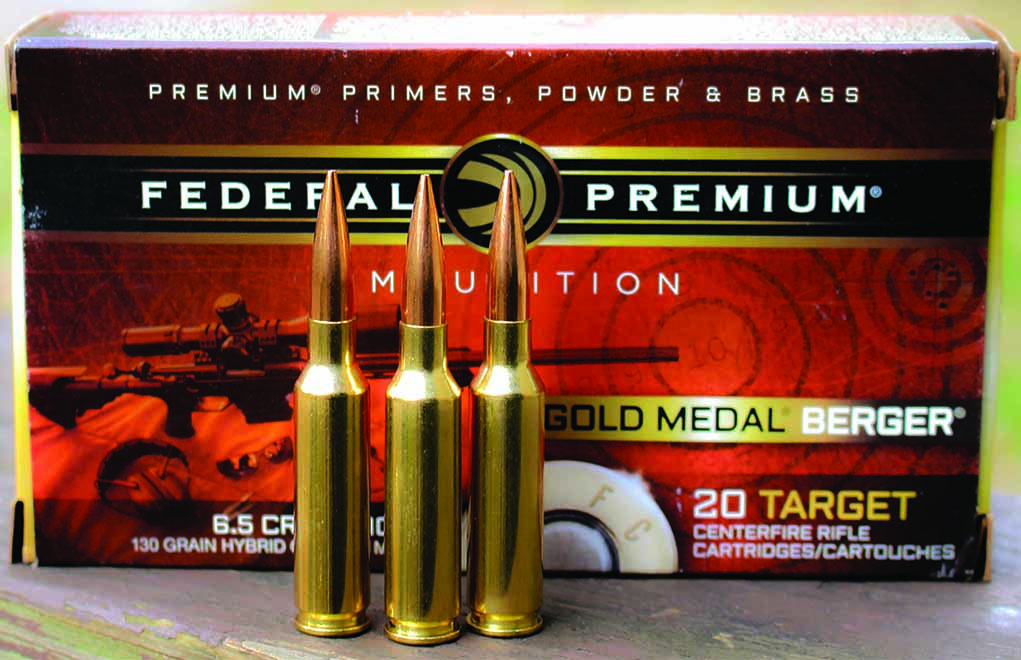
Well, Hornady engineered the .300 PRC to have some unique features in an effort to enhance accuracy for long-range shooting. The shoulder/neck joint is set to be at the precise spot where a 225-grain Hornady bullet’s shank meets its boat tail when seated to the proper dimension in the PRC case. Keeping the bullet in the neck portion of the cartridge, along with minimal free bore in the design of the chamber, definitely enhances accuracy, and shooters are finding that there’s a definite advantage to the .300 PRC design. It seems to be economical to build, and the results at the range are excellent. Driving a 225-grain bullet with a G1 of .777 and a G7 of 0.391 to a muzzle velocity of 2,810 fps, the .300 PRC isn’t going anywhere.
6.5mm Cartridges
The 6.5mm cartridges have expanded beyond the ever-popular Creedmoor to include some highly efficient and accurate designs. Hornady also has a 6.5 in its PRC line that’s designed for competition and is considered the Creedmoor’s “big brother.”
Bettering the Creedmoor’s velocity by more than 250 fps, the 6.5 PRC is based on the .300 Ruger Compact Magnum (which, itself, is based on the .375 Ruger) and runs smoothly in a short-action rifle. It’s accurate, flat shooting, easy on the shoulder and a better long-range performer than the now-standard Creedmoor—even if the recoil is sharper … but still manageable. Like the .300 PRC, it uses a standard, 0.532-inch (H&H Magnum) bolt face. And while I’m not overly fond of the short, squat cartridges, the 6.5 PRC is a great choice for both the target range and the hunting field.
I’ve long been a fan of the 6.5-284 Norma, because this cartridge delivers my personal favorite blend of trajectory, energy and accuracy as both a hunting and a target cartridge. It’s just the old .284 Winchester necked down to hold 6.5mm bullets. And, although it’s usually housed in a short-action rifle, I like the additional flexibility of a long-action rifle, simply because there are so many very-low-drag bullets available to the handloader. The 6.5-284 Norma can, when pushed hard, match the velocity of the 6.5 PRC, and it shines on the target range.
Weatherby must be of a similar mindset, because its new 6.5 Weatherby RPM (Rebated Precision Magnum) is an elongated 6.5-284 that’s designed to give flat trajectories, high retained energy and great wind deflection values in a lightweight rifle. To see Weatherby make its first venture away from a double-radius shoulder in a cartridge with no belt says something about the effectiveness of this design.

The 6.5 RPM launches a 140-grain bullet at a muzzle velocity of between 2,975 and 3,075 fps—just a bit ahead of the 6.5-284 Norma and on par with the 6.5 PRC. I really like this Weatherby cartridge as a hunting choice, although I’d wager that it’ll show up in target cartridge circles before very long.
Get On Target With Long-Range Shooting:
- Mils vs. MOA: Which Is The Best Long-Range Language?
- Buying the Perfect Precision Scope
- Shooting Positions: Variety Is The Spice Of Life
- Riflescope Tracking: Why It’s Crucial To Test It
- Long-Range Shooting: Becoming Your Own Spotter
The Performance-To-Cost Ratio
Looking at the performance/cost ratio, we find that the 6.5 Creedmoor pushing a 140-grain bullet at 2,700 fps and with ammo topped with a decent bullet (and there’s plenty to choose from) costs between $25 and $35 per box of 20.
Bump up to the 6.5 PRC, and you’ll see a jump in muzzle velocity to 2,960 fps; and while that velocity increase certainly flattens out trajectory (at 1,500 yards, you’ll need 18.6 mils of elevation for the Creedmoor, as compared with 15 mils for the PRC), the PRC ammo runs between $40 and $55 per box of 20. The 6.5 Weatherby RPM will run between $50 and $65 per box and, if you want to take full advantage of the 6.5-284 Norma case (pushing a 140-grain bullet to 2,875 fps, as custom loaded by Nosler), you can plan on spending as much as $80 per box of 20.
Am I trying to intentionally make a case for choosing the Creedmoor? No, because I really enjoy hunting with the others. Nevertheless, a weekend at the target range would put a dent in my wallet for sure.
The 6mms are surely doing their best to get noticed among this crowd. The 6mm Creedmoor, 6XC and 6mm Dasher all give very good long-range performance with less recoil than their 6.5mm siblings, so if you’re into timed shooting competitions, this feature might appeal to you.
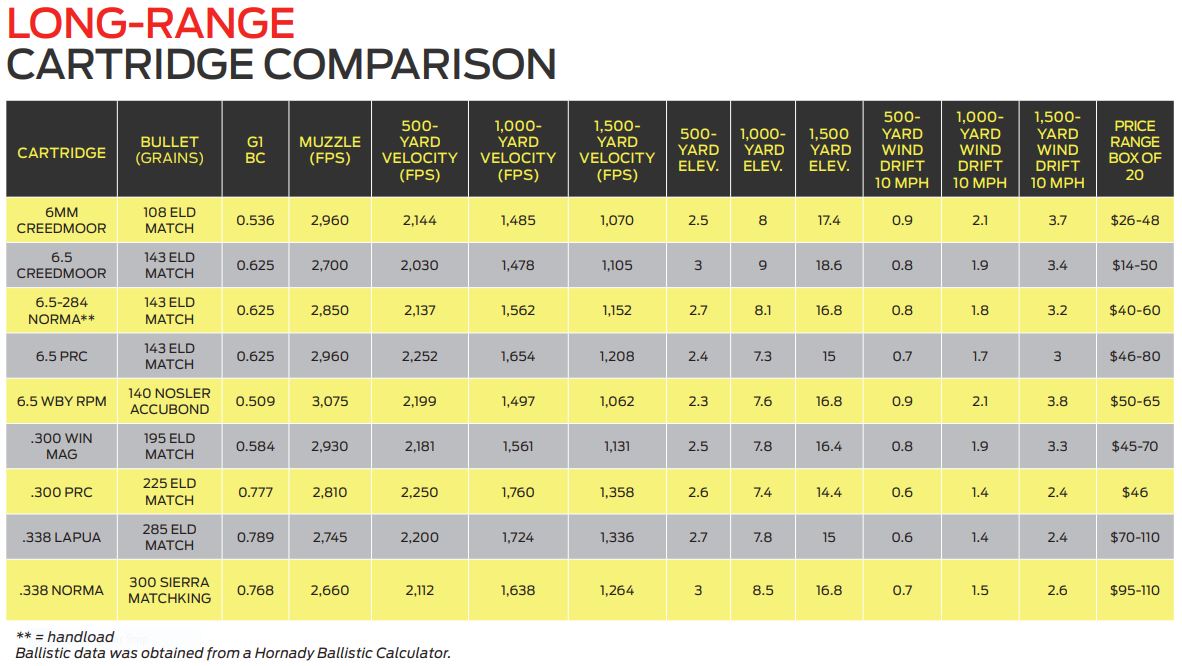
To give an idea of where the 6mm Creedmoor sits in comparison to the 6.5 Creedmoor and 6.5 PRC: When using a 108-grain Hornady ELD Match bullet, at a muzzle velocity of 2,960 fps (this seems to be a popular velocity and is common to the .300 Win. Mag. with 180s, the 6.5 PRC with 140s and the 6mm Creedmoor), that 1,500-yard target will require 17.4 mils of elevation (in the middle of the two 6.5s). The wind deflection value for the lighter bullet in the 6mm is greater than either of the 6.5s (3.7 mils for the 6mm CM versus 3.4 mils and 3 mils, respectively), but the reduced recoil might make for an equal trade.
Pricing? The 6mm Creedmoor ammo is on par with the 6.5 Creedmoor ammo—it runs between $25 and $35 per box. The other 6mms are certainly more expensive, and the range of choices is diminished.
What we’re looking at is a wide range of cartridges with which we can effectively and efficiently send a bullet one helluva long way. Even the best deal on a chassis gun can quickly be negated by an ammo bill that equals Nicaragua’s Gross National Product, so depending on how far down the rabbit hole you’ve gone in the long-range game, it might sometimes warrant seeking out the proper balance of cost-effectiveness, downrange performance and economical sense, especially if handloading is off the menu.
Editor's Note: This article originally appeared in the 2020 Long-Range Shooting issue of Gun Digest the Magazine.

Next Step: Get your FREE Printable Target Pack
Enhance your shooting precision with our 62 MOA Targets, perfect for rifles and handguns. Crafted in collaboration with Storm Tactical for accuracy and versatility.
Subscribe to the Gun Digest email newsletter and get your downloadable target pack sent straight to your inbox. Stay updated with the latest firearms info in the industry.

![Best Concealed Carry Guns In 2025 [Field Tested] Wilson Combat EDC X9S 1](https://gundigest.com/wp-content/uploads/Wilson-Combat-EDC-X9S-1-324x160.jpg)


![Best 9mm Carbine: Affordable PCCs [Tested] Ruger Carbine Shooting](https://gundigest.com/wp-content/uploads/Ruger-Carbine-Shooting-100x70.jpg)
![Best AR-15: Top Options Available Today [Field Tested] Harrington and Richardson PSA XM177E2 feature](https://gundigest.com/wp-content/uploads/Harrington-and-Richardson-PSA-XM177E2-feature-100x70.jpg)
